Last updated: December 3, 2020
Article
West Cook Inlet Ecology
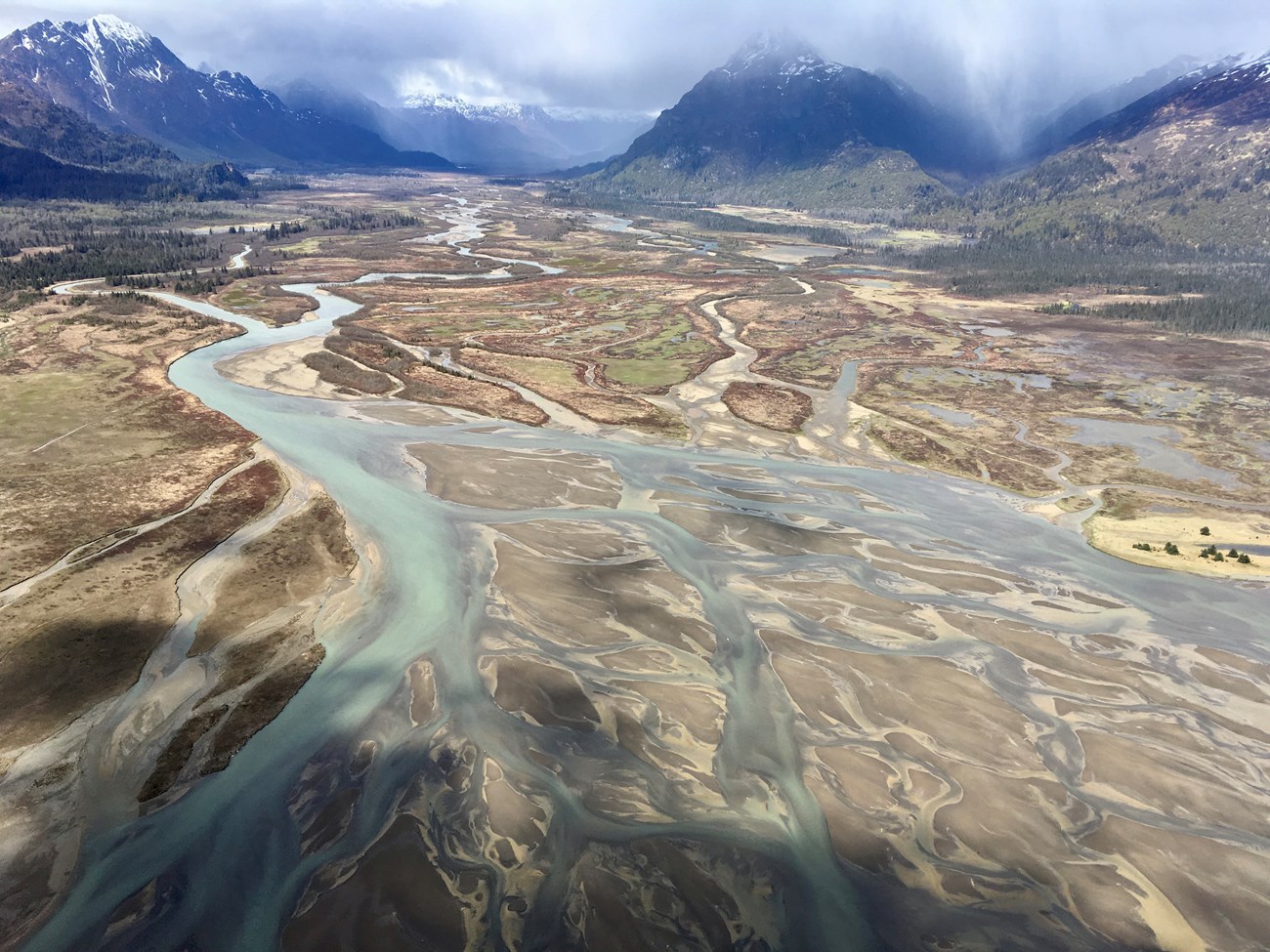
sediments into the streams and salt marshes.
NPS Photo/D. Liles
A Vibrant Ecosystem
The shoreline between Chinitna and Tuxedni Bays supports a vibrant ecosystem and highly productive habitat for coastal plants and animals. As tides inundate the land, they deliver nutrients and saline rich water. This water causes streams to rise, and tidal channels to form. As the tide changes, nutrients settle and become trapped among plants. The mixing of marine and terrestrial nutrients creates highly productive and adaptable salt marshes along the coast. These areas play an important role in supporting coastal food webs and habitats.
Cook Inlet is an extremely dynamic estuarine system dominated by the tidal cycle. Normal tidal heights can vary from 18 ft. (5.5 m) at Kachemak Bay to 29 ft. (8.8 m) at Anchorage with extreme tides over 36 ft. (11 m) giving Cook Inlet some of the largest tidal ranges in the world. Tidal fluctuations can be thought of as a basin being filled with water and then drained carrying and depositing nutrients with each shift of the tide. These extreme tidal ranges produce strong currents into the inlet, carrying organisms and sediments, while also circulating nutrients and oxygen. Currents also carry waste material introduced by human activities, such as logging, prospecting/mining, roadbuilding, etc.
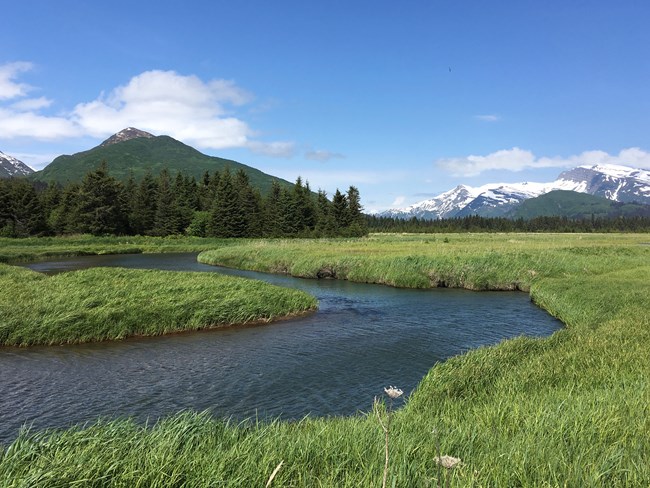
NPS Photo/A. Jones
A World Where Land and Water Meet
Salt marshes are highly productive estuarine habitats occupying less than one percent of the total land area of Lake Clark National Park and Preserve, yet they are vital to the park’s ecosystem. They act as buffer zones between freshwater and saltwater creating a brackish environment affected by tidal oscillation. This makes these areas unique by harboring plant communities of salt-tolerant sedges and grasses that support a wide range of animal species, including intertidal invertebrates, fish, migratory birds, and mammals, such as a dense population of coastal brown bears.The Salt Marsh: A Self-sustaining Cycle
Salt marshes are among the most productive ecosystems in the world and many animal species rely on them for food, survival, nursery habitats essential for fish, shelter from predators, and nesting and breeding grounds. Thesesalt marshes can be thought of as biological supermarkets. They absorb nutrients before they reach the sea, and in turn, provide great volumes of food for other animals. Dead plant leaves and stems break down in the water to form small particles of organic material, which feeds many small aquatic insects, shellfish, and small fish that are food for larger predatory fish, birds, and mammals.
Coastal habitats provide a crucial biological supermarket of abundant sources of protein that bears need after
emerging from hibernation in the spring. During a bear’s winter slumber, their protein reserves are depleted leading to a loss of significant amounts of adipose tissue while in their dens. Lake Clark’s coast provides brown bears with vital protein-rich sedges, such as Carex ramenskii and other salt-tolerant plants that are necessary for bear’s survival and feeding young cubs.
More Salty Snacks
-
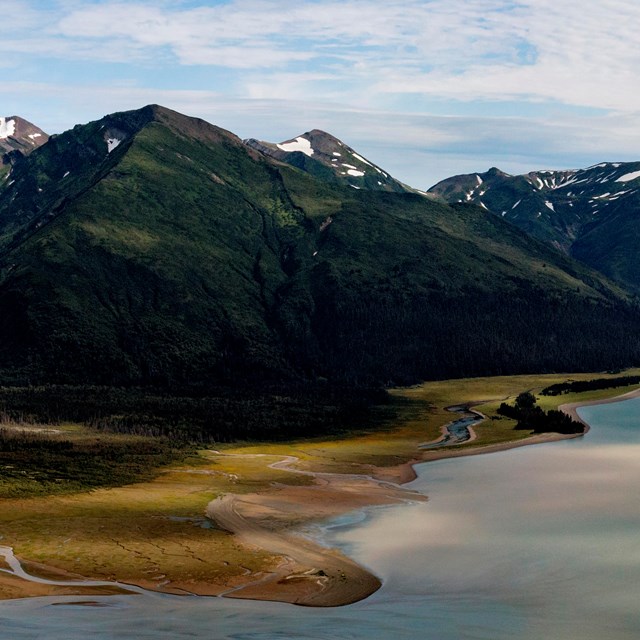 What makes a salt marsh special?Coastal Salt Marshes
What makes a salt marsh special?Coastal Salt MarshesWhat makes a salt marsh special? Join NPS scientists from the Southwest Alaska Inventory and Monitoring Network to learn more.
-
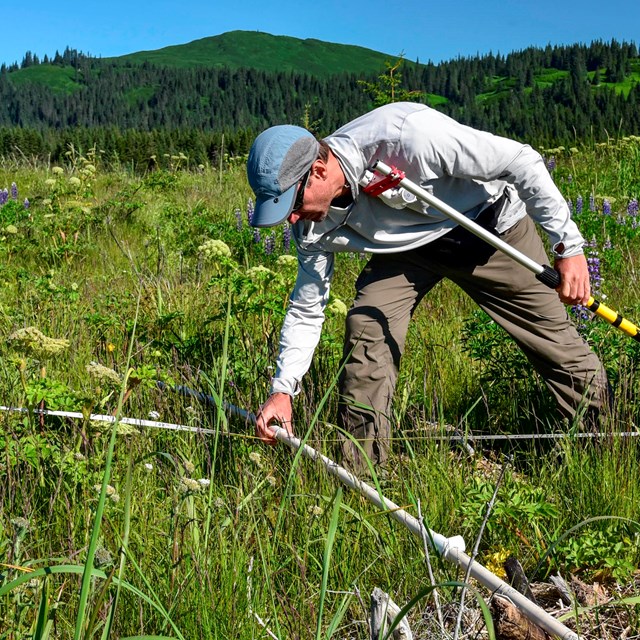 A Closer Look at Salt MarshesSalt Marsh Monitoring
A Closer Look at Salt MarshesSalt Marsh MonitoringA closer look at how SWAN scientists survey plots along the Cook Inlet Coast.
-
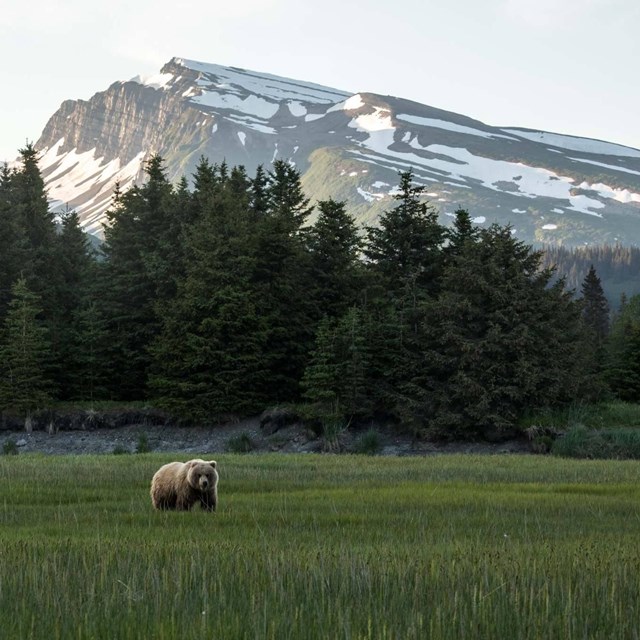 A Day on the Coast
A Day on the CoastThinking about visiting the Lake Clark's Cook Inlet coast? This short film offers a spectacular introduction to what your day may be like.
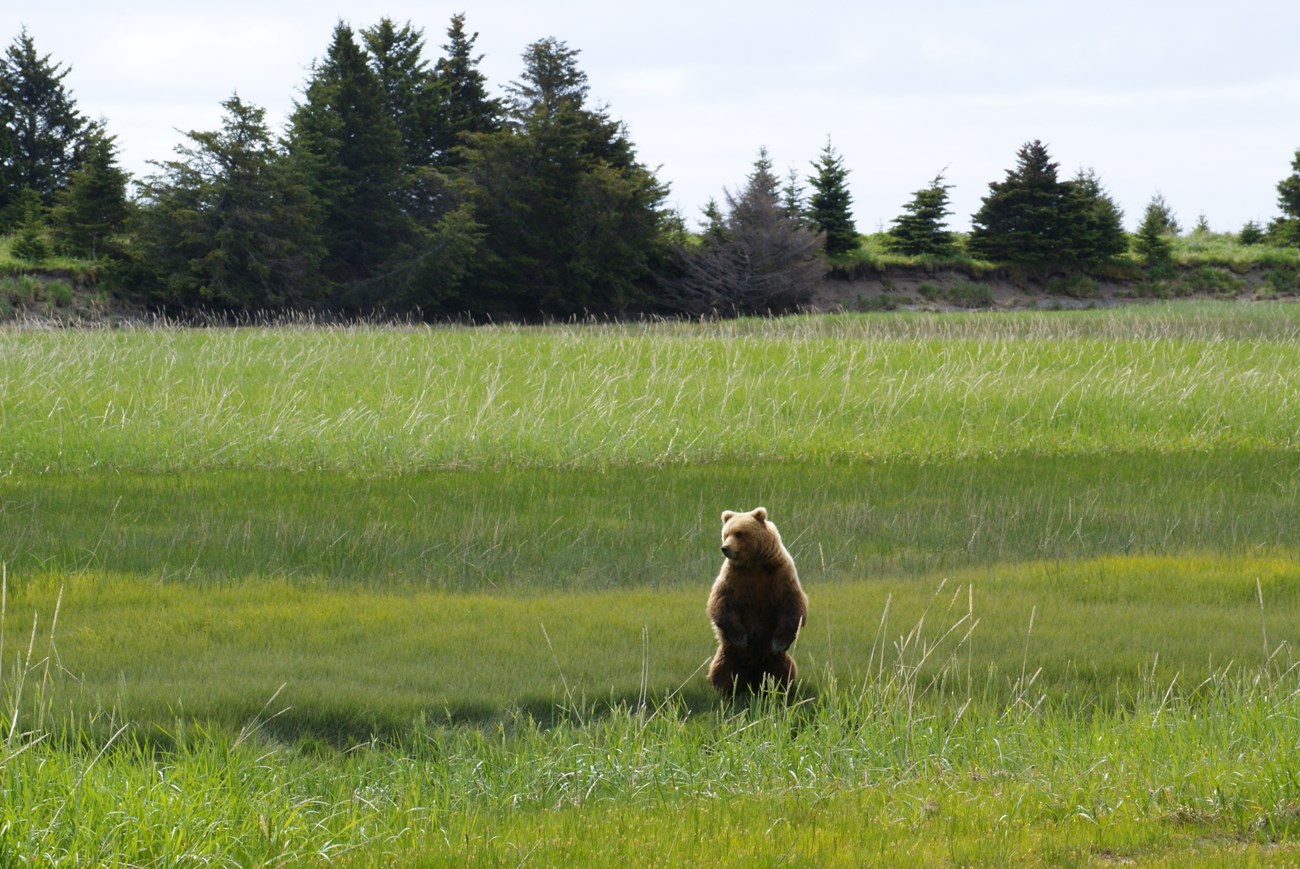
NPS Photo/A. Jones
Functions and Values
Salt marshes are important in protecting a vibrant ecosystem by limiting coastal erosion, acting as filters for water quality improvement, and removing carbon dioxide from the atmosphere for storage in plant material. These ecosystems protect shorelines from erosion caused by wind, water, and ice by buffering wave action and trapping sediment. As saltwater flows through a salt marsh, marsh grasses and peat (a spongy matrix of live roots, decomposing organic material, and soil) act as enormous natural filters of pollutants, such as heavy metals and waste, as well as sediments and nutrients. These natural filters can be thought of as water filters that sift through impurities resulting in clean drinking water, only in this case, these filters are holding onto key nutrients necessary to sustain life.Coastal wetlands are effective carbon sinks storing carbon within their plant communities and soil instead of releasing it into the atmosphere as carbon dioxide. Plants act as sponges soaking up carbon into the roots and soil effectively holding twice as much carbon as the atmosphere. Most soil carbon is derived from photosynthesis, which takes carbon from the plant material into dense root systems for storage creating a cyclic carbon storehouse. Plants use energy from the sun to chemically combine carbon dioxide with hydrogen and oxygen from water to create sugar molecules. Animals that eat plants digest these sugar molecules to obtain energy. Respiration, excretion, and decomposition release the carbon back into the atmosphere or soil continuing the cycle. Thus, salt marshes are important in helping to moderate global climate conditions at an early stage in the Earth’s complex carbon cycle.
A Powerful Ecosystem
It is important that wetland environments, such as these coastal salt marshes, are protected for future generations to explore, experience, and learn about. Salt marshes are dynamic ecosystems that tell a story deeply rooted in symbiotic relationships among a great variety of plant and animal species. Coastal marshes of Lake Clark National Park and Preserve may represent a minor habitat by acreage, in comparison with the vast alpine interior, with its hundreds of lakes and waterways. However, the ecological value of coastal wetlands looms large, when we take into account the species diversity the habitat sustains. Coastal marshes, for example, are an essential component of the brown bear-centered ecosystem, providing essential early season high protein sedges as bears emerge from their dens hungry and waiting for salmon to arrive.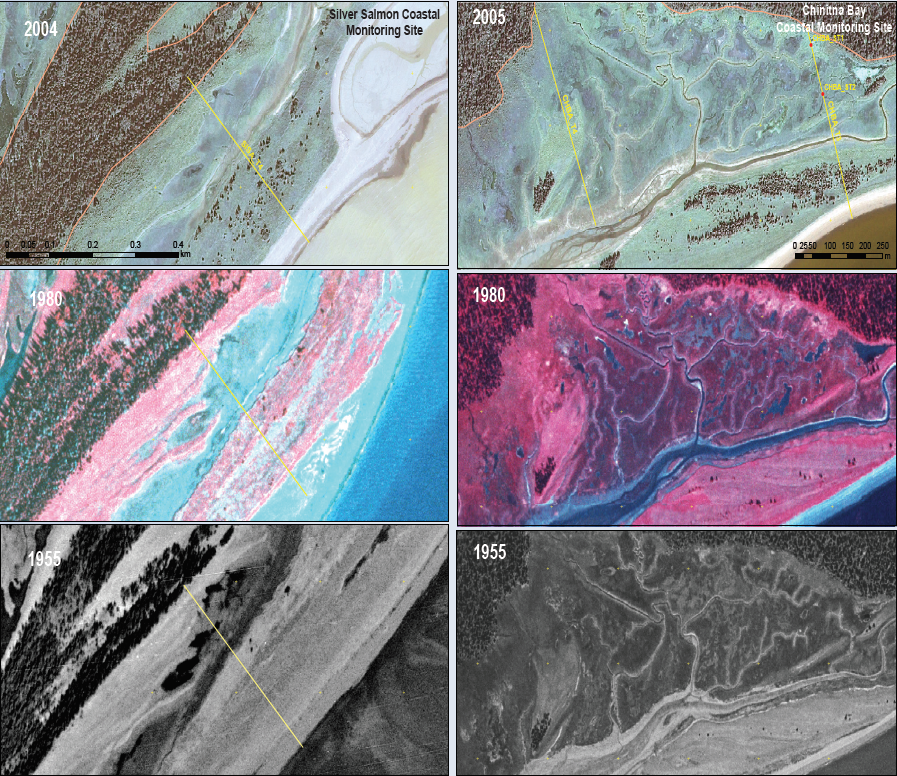
following the 1964 earthquake.
NPS/SWAN Images
